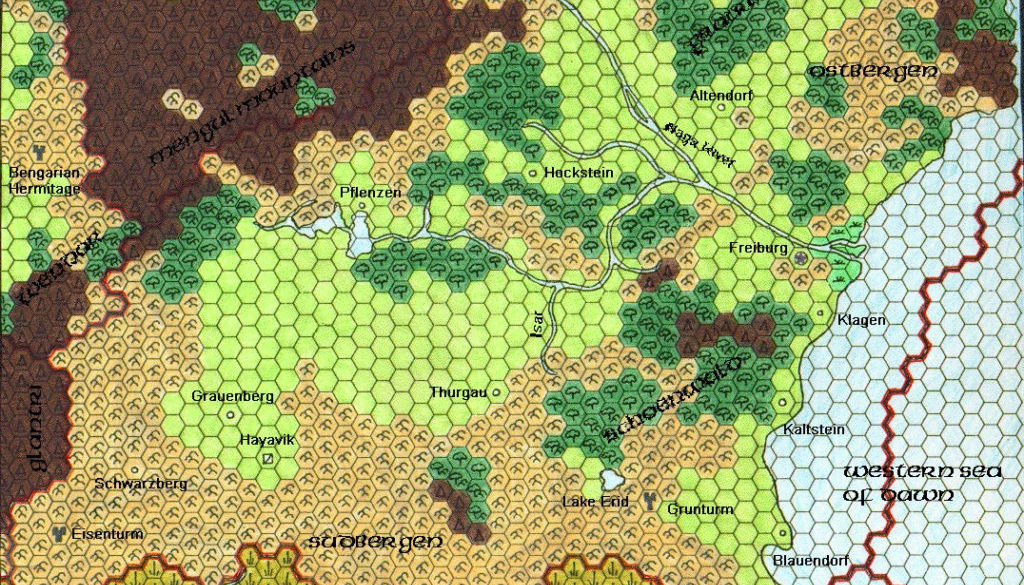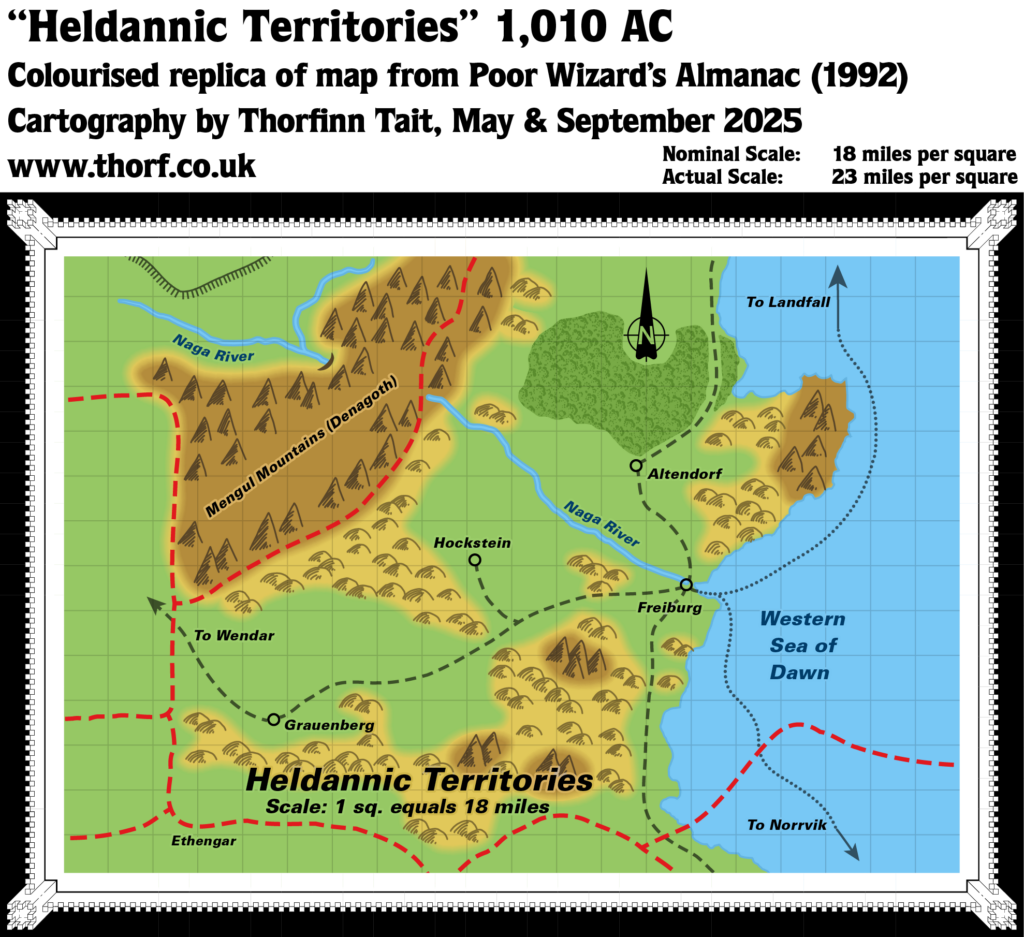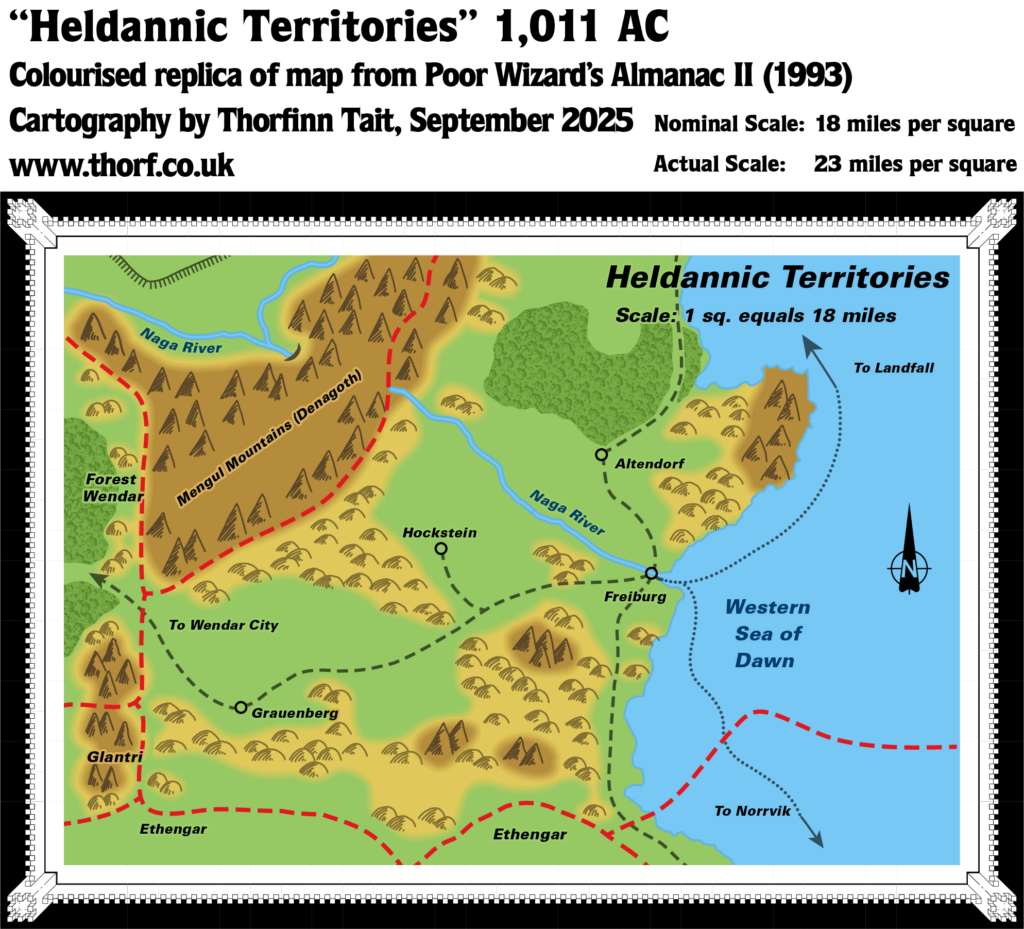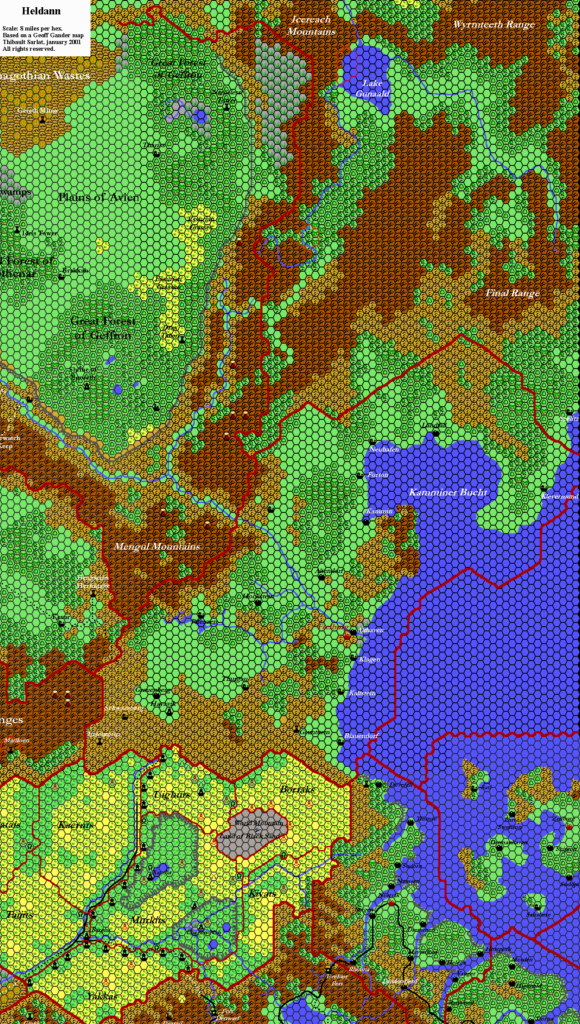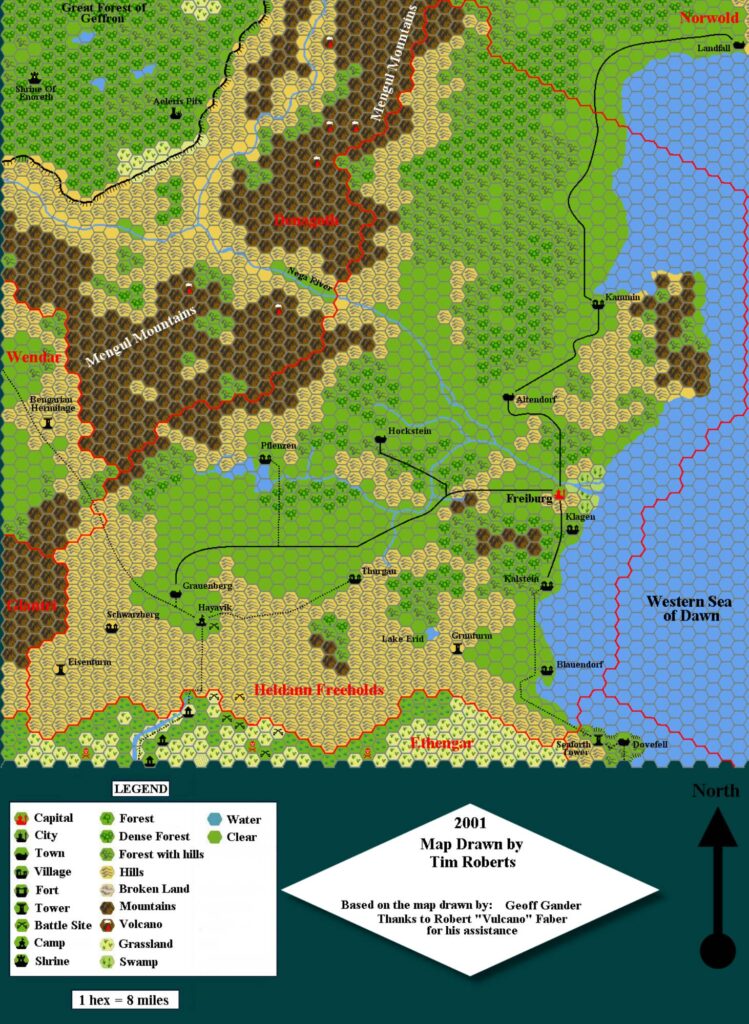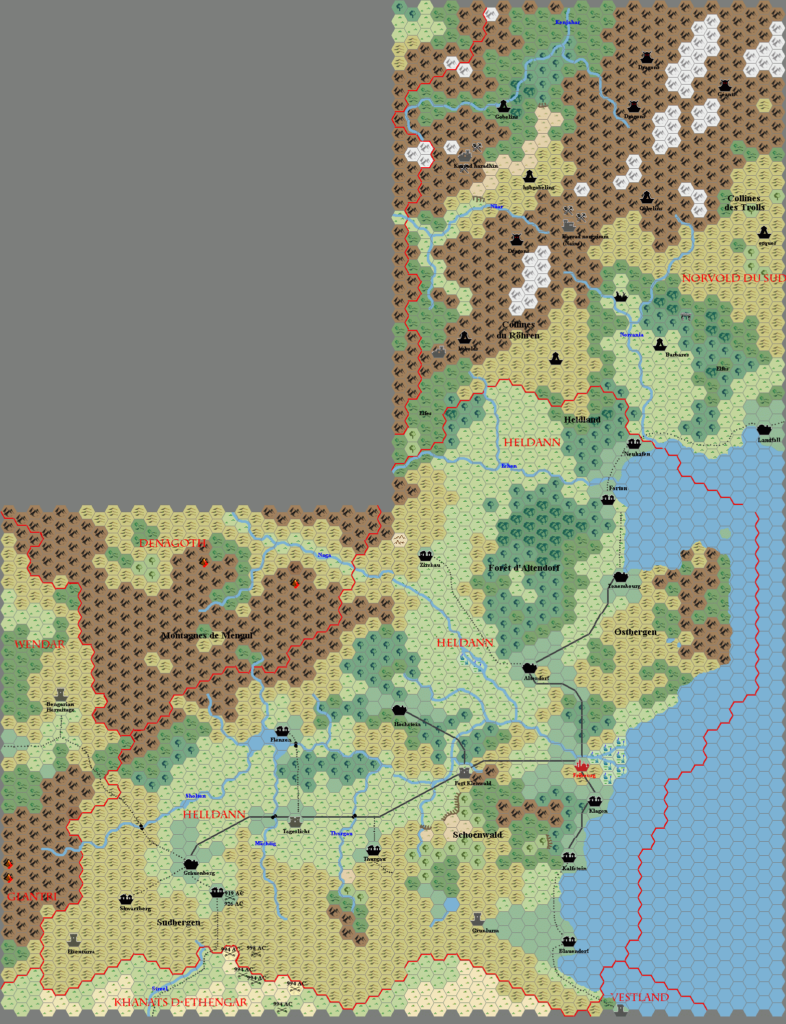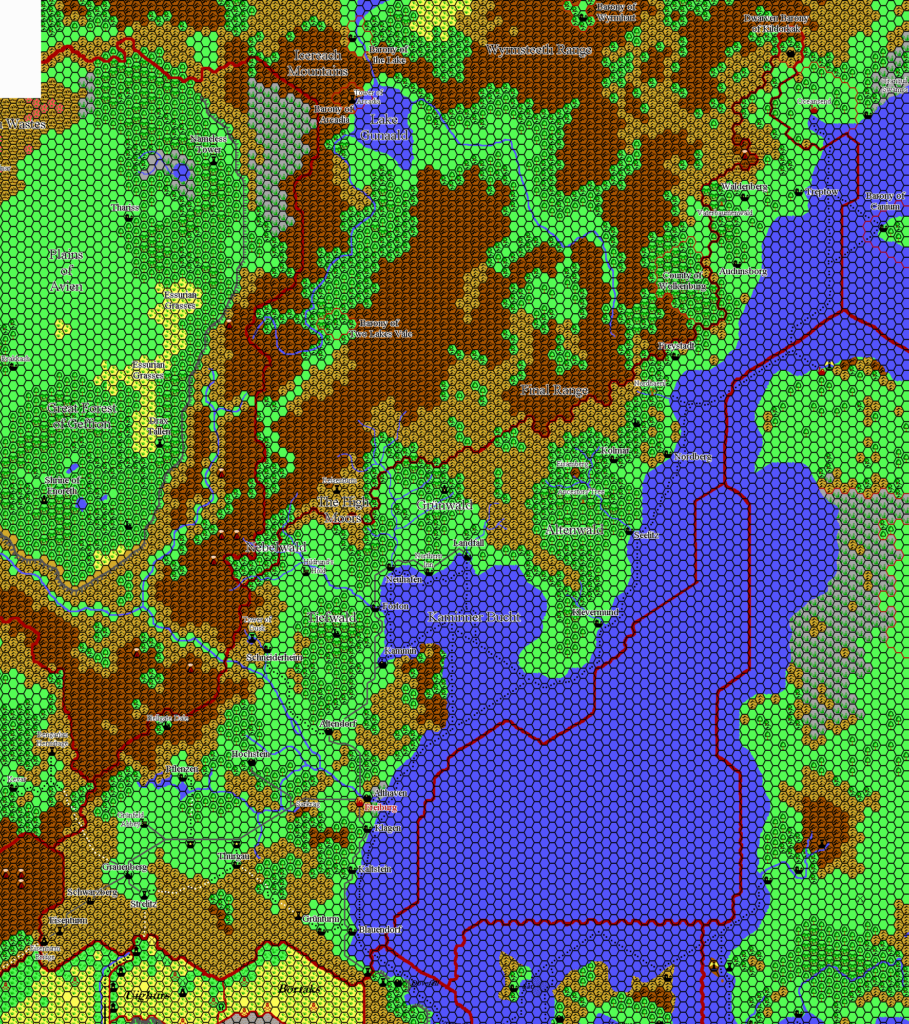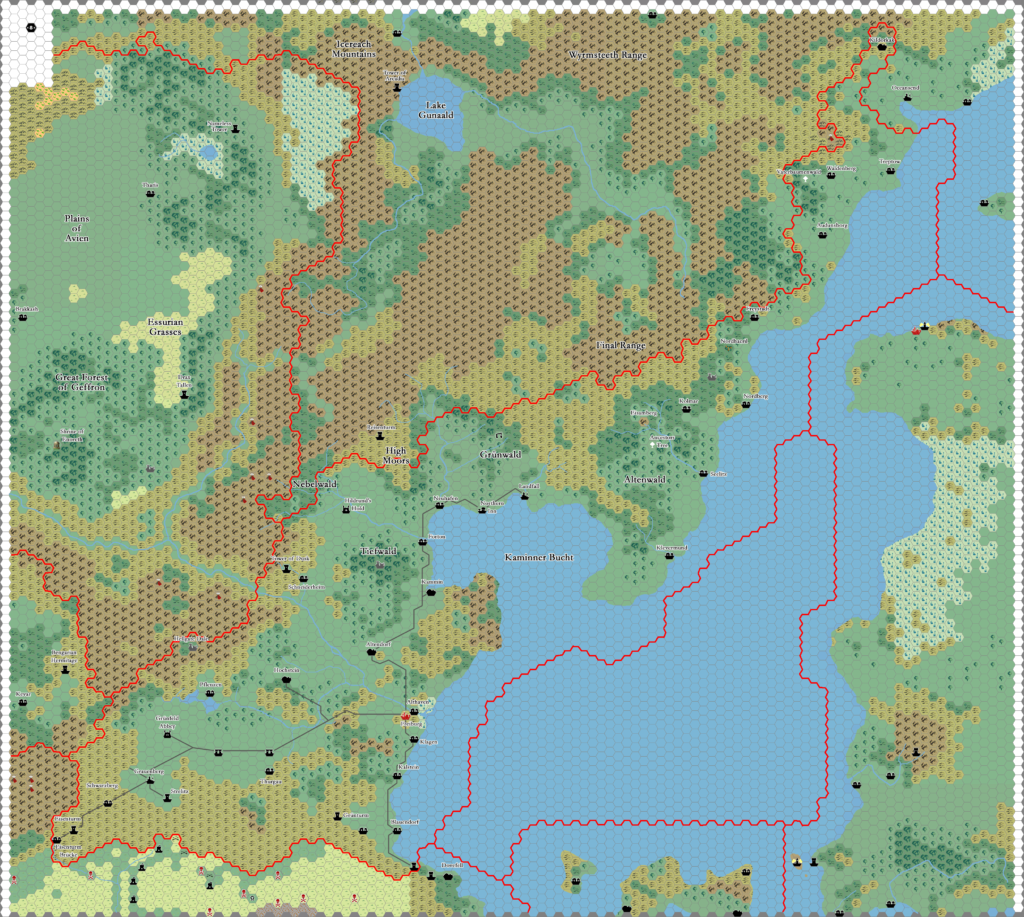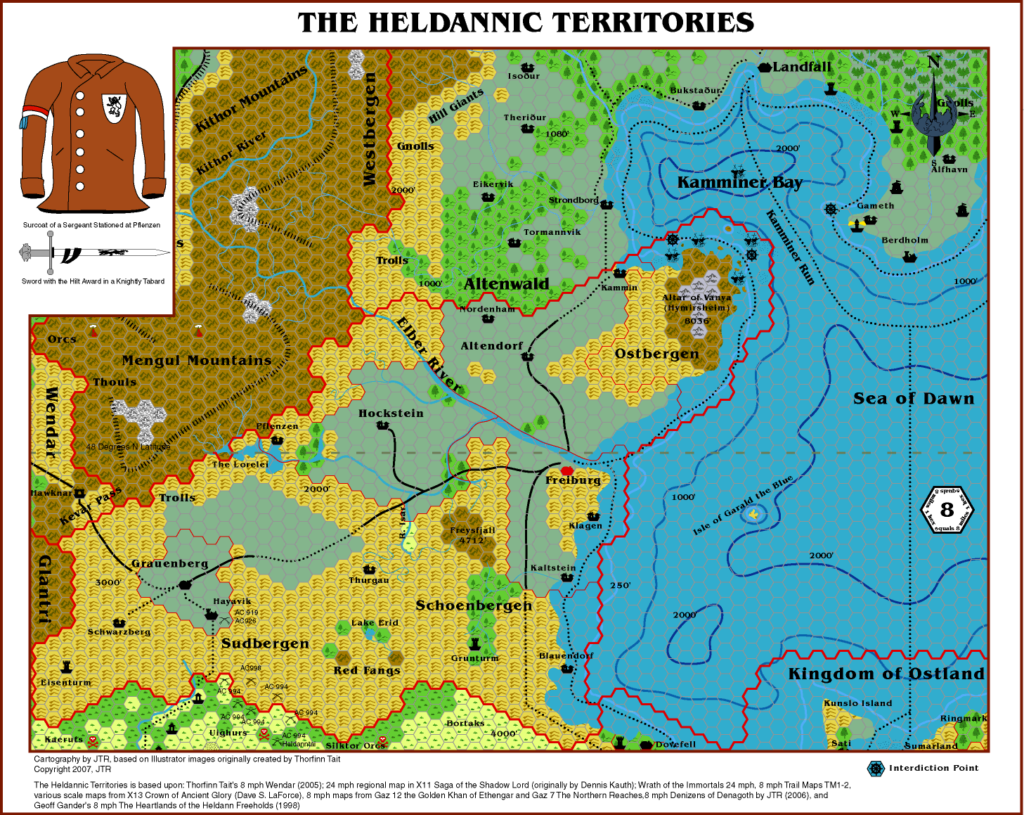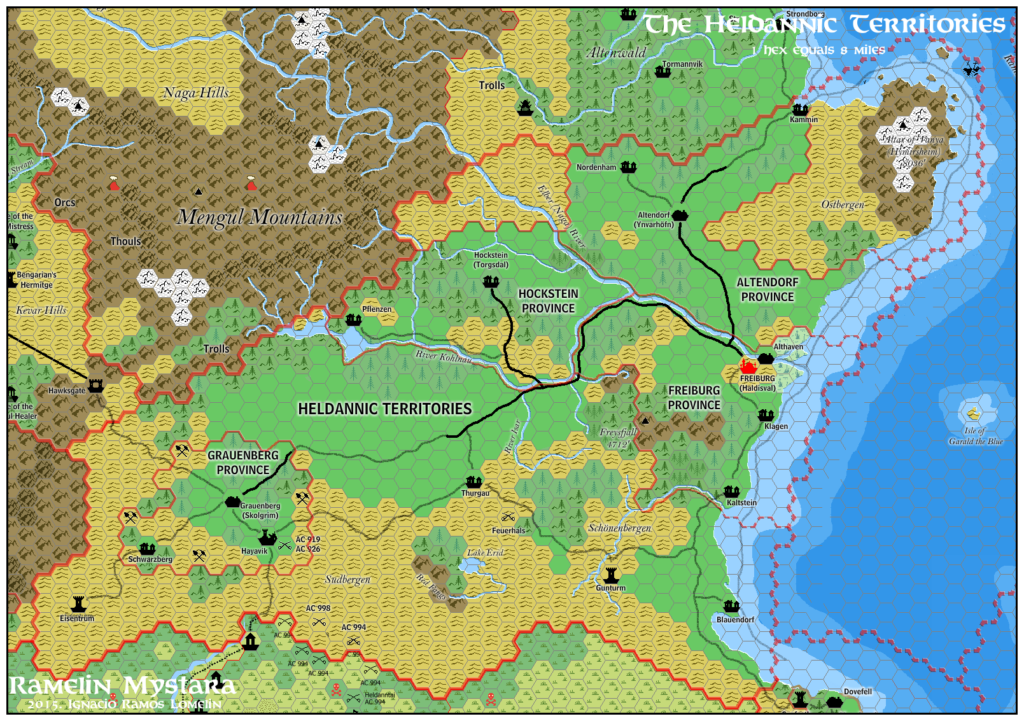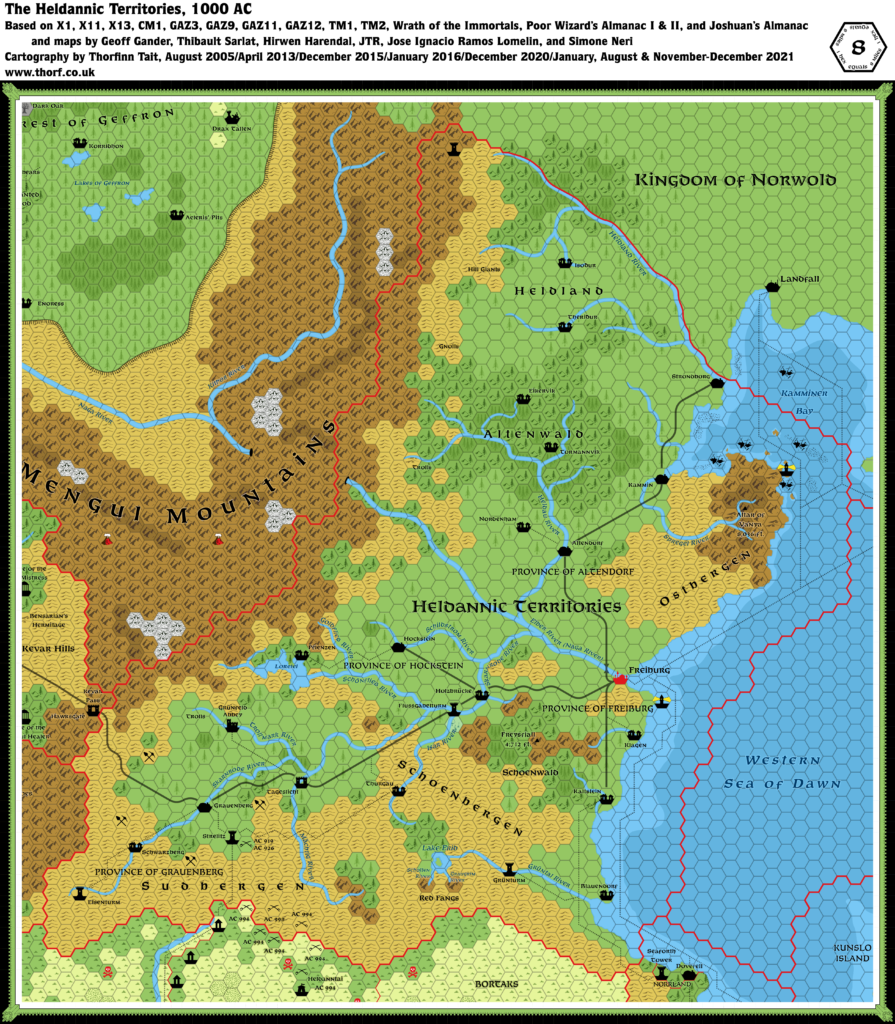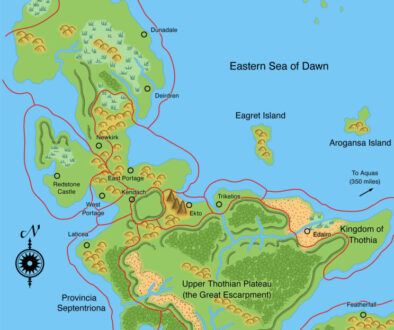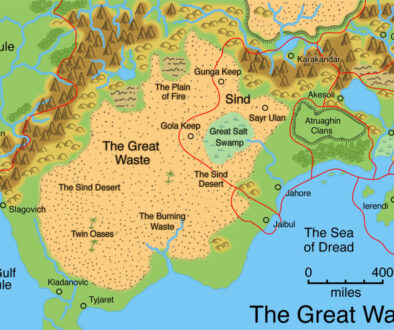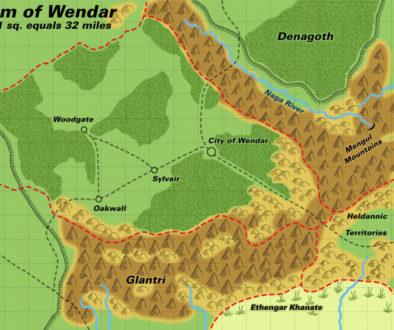Geoff’s Heldann, 8 miles per hex
Heldann was surely the most longed-after map of the 90s, rivalled only by Wendar and Sind, the other two nations on the margins of the Known World. The Heldannic Knights’ appearances in Bruce Heard’s popular The Voyage of the Princess Ark series in Dragon Magazine made the general lack of information on their nation all the more puzzling.
That was to change in 1998, when Bruce began a series of development articles for Heldann (which you can see at the Vaults of Pandius here).
Also at some point in 1998, Geoff made this: the first detailed map of Heldann ever posted. The exact date is not clear, although we do know that Geoff started using Andrew Theisen’s hex templates from July of that year, so it seems likely that this map predates that.
So we are left with a chicken-and-the-egg conundrum: which came first, Geoff’s map, or Bruce’s articles?
Regardless, this map is another huge milestone in Mystara’s fan-made maps — and it’s another from Geoff Gander. This map would form the basis of all future attempts to map Heldann, of which there would be many.
Fan-made Map by Geoff Gander (1998)
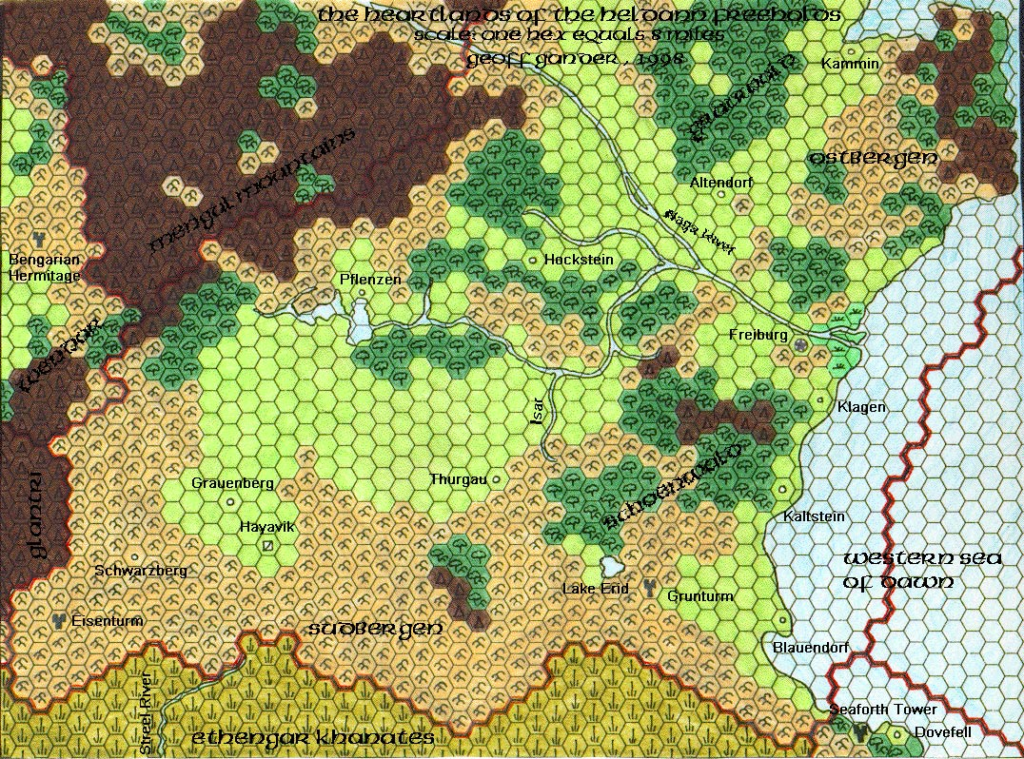
This is an original map created by one of Mystara’s excellent fan cartographers. For more information on the cartographer, including a gallery of all their maps, see also Appendix M: Mappers of Mystara.
Sources
- X11 Saga of the Shadow Lord (1986) (PDF at DriveThruRPG)
- X13 Crown of Ancient Glory (1987) (PDF at DriveThruRPG)
- GAZ7 The Northern Reaches (1988) (PDF at DriveThruRPG)
- TM2 The Eastern Countries (1989) (PDF at DriveThruRPG)
- Wrath of the Immortals (1992) (PDF at DriveThruRPG)
References
- All of Geoff’s maps at the Atlas of Mystara
- Geoff’s entry in Appendix M: Mappers of Mystara
- Geoff’s author page at the Vaults of Pandius
Chronological Analysis
This is a fan-made map. It was published in 1998, possibly around the beginning of May 1998, although this is uncertain. The updated Atlas version of this map is Heldann, 8 miles per hex. See also Appendix C for annual chronological snapshots of the area. For the full context of this map in Mystara’s publication history, see the upcoming Let’s Map Mystara 1998. (Please note that it may be some time before the project reaches this point.)
The following lists are from the Let’s Map Mystara project. Additions are new features, introduced in this map. Revisions are changes to previously-introduced features. Hex Art & Fonts track design elements. Finally, Textual Additions are potential features found in the related text. In most cases, the Atlas adopts these textual additions into updated and chronological maps.
Under Construction! Please check back again soon for updates.
Additions
- Forests — Geoff marked two named forests, the Schoenwald and the Grünwald. Smaller areas of forest throughout are partially adapted from official sources, but mostly invented to add detail to the terrain at this scale.
- Lakes — Geoff created a complex system of lakes near Pflenzen.
- Rivers — All except for the Naga River are Geoff’s invention, as is the Naga’s river island west of Altendorf. Only the Isar is named.
- Settlements — Eisenturm, Kammin, Pflenzen, Schwarzberg, and Thurgau all appear here for the first time. Eisenturm is a tower, but the others are somewhat ambiguous white circles.
- Terrain — The Sudbergen hills in the south and the Ostbergen hills and mountains in the east are new.
Revisions
- Lakes — Lake Erid has been adapted from X13’s map.
- Rivers — The Naga River is shown to cleave through the mountains quite thoroughly, and is unbroken. X11’s original version was interrupted by a label, which in turn Wrath interpreted as the river going underground for a section. Geoff discarded this, likely assuming that X11’s river was simply obscured by the label.
- Settlements — Freiburg first appeared on X11’s map, but gains a precise location at this scale for the first time here. The same is true of the three main towns added in Wrath, Altendorf, Hockstein, and Grauenberg. On the other hand, Klagen, Kaltstein, Blauendorf and Grunturm all appear unchanged from their origin in TM2, while GAZ12’s Hayavik is here marked as (presumably) a ruin.

